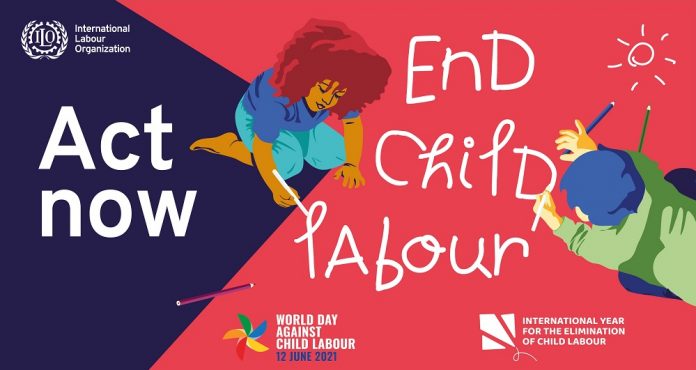This article is written by Abhishek Aditya, who is pursuing a Diploma in Labour, Employment and Industrial Laws (including POSH) for HR Managers from LawSikho.
Table of Contents
Introduction
On 13th June 2017, India ratified the two fundamental ILO Conventions on Child Labour. The two conventions are titled ‘Minimum Age Convention, 1973’ (identified as No. C138) and ‘Worst Forms of Child Labour Convention, 1999’ (No. C182). These conventions have been widely ratified by member nations. In fact, C182 is the first ILO Convention that has received ‘universal ratification’ i.e. ratification by all 187 member nations of ILO. More than two decades have passed after the second of these conventions were adopted by ILO and while significant progress has been made during this time in abolishing and regulating child labour, the trend of the last few years indicates the need for urgent measures.
Not all work is bad for children
These conventions, while seeking to abolish ‘child labour’ (Article 1, C138 Convention), seek to strike a balance against the prevailing economic realities which lead to child labour. Thus, not all ‘work’ is sought to be prohibited. The conventions identify broadly three types of work where children may be permitted which are as follows.
1. Normal or regular work
While not specifically defined in the convention, this simply refers to work in which children can be legally engaged after attaining the minimum age of work. While C138 sets this minimum age as 15, it allows countries a lower limit of 14. Most member countries of ILO have fixed minimum age between 14 and 16 for normal or regular work.
The Convention states that the minimum age of work in a country may not be less than the age at which compulsory education ends in that country. (Article 2, C138 Convention).
Child labour is directly associated with children being out of school. More than 25 per cent of children engaged in labour are out of school. Not only does this rob the children of their childhood, but it also severely limits their employment prospects for decent work in their adulthood. Even among those who are not out of school, the additional burden of their employment affects their education. It is in this background, that the minimum age of work is directly associated with the age of completion of education.
2. Hazardous work
C138 prohibits the employment of children below 18 in any work which may threaten their safety and health. C182 declares the employment of children below 18 in some hazardous work as one of the ‘worst forms of child labour’ (Article 3, C182 Convention).
While regulating the employment of children in ‘hazardous work’, the conventions allow member countries to determine the list of hazardous occupations themselves, in consultation with employers’ and workers’ associations in their countries. Thus wide variations exist in such lists as notified by each country. Whereas Vietnam lists 91 occupations as hazardous work for the purpose of these conventions, India lists only 3 occupations.
Member countries may allow employers to engage persons over 16 years of age in hazardous work. However, this may only be done after ensuring the safety and health of the children engaged in such work and that they have received proper instruction and training to do that work.
3. Lightwork
Member countries have the option to allow children to engage in ‘light work’ below the minimum age of work from 12 or 13 years of age. In consonance with the above two points, light work is work that poses no hazard to the child and which does not interfere with his education. (Article 7, C138 Convention).
It is important to understand the distinction between normal work or light work and hazardous work for a number of reasons.
- C182 expressly calls for immediate measures for the removal of children engaged in the worst forms of child labour, which includes hazardous employment below the age of 18. However, merely removing children from such employment, without an alternative source of livelihood, is not a sustainable solution at all. It is therefore not enough that the legislative and policy framework seeks to eradicate the engagement of children in hazardous work. Indeed they should also pave the way for engaging children in normal or light work below the minimum age of work.
- Whereas hazardous work imperils the safety of a child, light or normal work, which does not compromise his education, actually provides him with an avenue for training and skill development, thereby enhancing his employment ability. Such youth employment should be encouraged; policy interventions by the government must integrate both prohibitions of hazardous employment and transition of young persons below 18 (or below 15) into light or normal work.
The two ILO Conventions have seen wide ratification by members, in part due to allowing such flexibility in policymaking by individual countries. Thus, countries may exclude certain occupations or may limit their application while implementing this Convention. (Articles 4 and 5, C138). Likewise, work done by children in schools or as part of training is excluded. (Article 6, C138). Artistic performances and household chores are also allowed, so long as the hours of work are regulated and do not interfere with the child’s education. (Article 8, C138). 
Worst forms of child labour
Article 3 of C182 defines the term ‘worst forms of child labour.’ These include in addition to hazardous work:
- Slavery, child trafficking, debt-bondage, forced or compulsory labour, use of children in armed conflicts.
- Use of children in prostitution or in pornography.
- Use of children in illicit activities, including drug trafficking.
Member countries must take urgent measures to ensure that children engaged in such worst forms of child labour are removed from those. (Article 1, C182)
Ratification and action on conventions by India
India has enacted significant changes to the Child Labour (Regulation and Prohibition) Act, 1986 in consonance with the C138 and C182 Conventions. Through amendments to the act made in 2016, the concept of adolescent labour was introduced and is defined as a person between 14 and 18 years of age. Employment in hazardous employment is expressly prohibited. However, in a significant change, the number of hazardous occupations and processes has been reduced from 83 to 3, namely mines, inflammable substances and ‘Hazardous processes.’ Thus children below 18 (and also below 14) may now be engaged in tanning, brick kilns and stone crushing units. In comparison, neighboring Bangladesh notifies 36 occupations in the list of hazardous work.
Moreover, the Act does not prohibit the employment of children in family enterprises. Worldwide, about 72% of child labour work is within one’s own family unit. The working conditions in such enterprises thus remain unregulated. Economic compulsions often force children to work in hazardous conditions even in family-owned units. Thus a large number of children remain outside the safety net provided by the Act.
The ratification by India is vital to the global efforts towards abolishing child labour. This is largely in part due to India’s large population. As per the 2011 census, one in ten children worldwide is engaged in child labour. Of these, about ten per cent are in India. India has also been one of the last countries to ratify these conventions. By contrast, Cameroon ratified C138 and C182 by 2002, Vietnam by 2003 and Pakistan by 2006.
The experience of two decades and the COVID-19 threat
The number of children below 18 engaged in child labour reduced from over 245 million in 2000 to about 152 million by 2016. Wide-ratification of conventions is often credited as one of the reasons for the progress made in this area. Except for Sub-Saharan Africa, there has been progressing in Asia and Latin America.
The number of children engaged in child labour has since increased to about 160 million by about 2020. Out of these 79 million are engaged in hazardous work. The COVID-19 pandemic threatens to wipe away years of progress made in this area – an estimated 206 million children could end up engaged as child laborers by the end of 2022.
The current situation demands urgent measures by all countries. Some measures, that the governments around the world need to include:
- Ensuring social protection for children and their families – It is needless to mention that child labour directly results from basic human needs. Ensuring social protection to at least fulfilling these needs can keep many children away from hazardous employment.
- Ensuring free and quality schooling up to the minimum age for employment – A child inside a school is not merely one who is out of child labour. He is the one who is better prepared for obtaining better employment in future.
- Promoting decent work for young people with fair income – To balance the economic realities of the countries and their people, with the need to keep children out of the ‘worst forms of child labour’ it is essential that young people find decent work that pays them fairly.
Indeed, Article 8 of the C182 Convention recognizes that child labour and its worst forms cannot be eradicated by the efforts of one country alone. It exhorts member countries to work together in the spirit of co-operation and mutual assistance for eliminating child labour. COVID-19 pandemic has already pushed us back by a number of years. If efforts are not made now, we may end up even further from our goal of eradicating child labour by 2025.
References
- Convention C182 – Worst Forms of Child Labour Convention, 1999 (No. 182) (ilo.org)
- Convention C138 – Minimum Age Convention, 1973 (No. 138) (ilo.org)
- wcms_797515.pdf (ilo.org) – Child Labour: Global estimates 2020, trends and the road forward
- Child Labour (Prohibition And Regulation) Amendment Act, 2016 Of India – Employment and HR – India (mondaq.com)
Students of LawSikho courses regularly produce writing assignments and work on practical exercises as a part of their coursework and develop themselves in real-life practical skills.
LawSikho has created a telegram group for exchanging legal knowledge, referrals, and various opportunities. You can click on this link and join:
 Serato DJ Crack 2025Serato DJ PRO Crack
Serato DJ Crack 2025Serato DJ PRO Crack










 Allow notifications
Allow notifications



